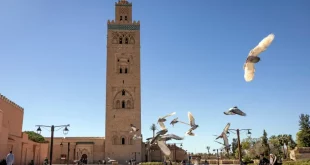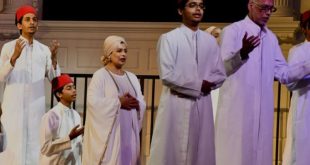Little is it known that there was a time when the Sultans of Turkey ruled the hearts of the Musalmans of the far-famed isle of Sarandib.
Sri Lanka is home to a large number of Muslims many of whom comprise the descendants of Arab traders who had settled down here several centuries ago. It would appear that in the early days of their settlement in the island, Sri Lanka’s Muslims owed allegiance to the Caliphs of Baghdad such as the illustrious Harun Al-Rashid who figures as the hero in many of the tales told in the Alf Layla wa Layla or The Thousand and One Nights. That the Sri Lankan Muslims of old maintained friendly relations with the caliphate in Baghdad is suggested by a local tradition concerning a 10th century cleric named Abu Baqaya who is buried in the Muslim burial ground in Colombo. A well known British Official Alexander Johnston (Transactions of the Royal Asiatic Society of Great Britain & Ireland. 1827) has recorded a tradition current in his day that the cleric was sent by the Caliph of Baghdad in the beginning of the 10th century with instructions to reform the Muslims of Colombo after hearing that these Muslims, who were then established as traders, were ignorant of and inattentive to the real tenets of their religion. The caliph, he records, instructed the cleric to explain to these Muslims the nature of their religion and erect such a mosque at Colombo as were likely to ensure for the future, their strict observance of the real spirit of Islamic worship.
Ottoman Sultans
It was however not very long before the caliphate in Baghdad fell to the Mongol hordes led by Hulagu in 1258. The Mongols who laid waste Iraq and the neighbouring Muslim lands were however not able to destroy the caliphate. A scion of the Abbasids, Prince Mutawakkil III (1509-1543) whose line was fortunate enough to survive the Mongol slaughter still lived under the protection of their former slave army, the Mamelukes in Egypt where he ruled as the Caliph, but as a nominal one as real power was exercised by the Mamelukes who used his name to legitimize their rule. In 1517, when the Ottoman Sultan Selim I defeated the Mameluke sultanate, bringing Egypt into the Ottoman realm, Mutawakkil who was taken to Istanbul agreed to formally surrender the title of Caliph as well as its outward symbols, the Sword and Mantle of the Holy Prophet Muhammad (Peace be Upon Him) as soon as he died to the Ottoman Sultan. It was thus that the Ottoman Conqueror Selim became the Caliph of the Muslim World. The fame of the Ottomans as the Protectors of Islam soon spread far and wide for not only did they possess a good part of the Arab world including Syria, Iraq and Palestine, but also held the Cradle of Islam, the Hijaz whose two holy cities Mecca and Medina they dedicated to protecting, taking the humble title of Khadim-ul-Harameyn or Servant of the two sanctuaries.
The Sultans of Turkey were by now the acknowledged heads of the Islamic World and the bearers of the Caliphate instituted in the early days of Islam for its protection and propagation. It would appear that no sooner the Muslims of Sarandib learnt that their new caliphs were Turks, they pledged them their loyalty, or even perhaps their allegiance, in spite of the fact that many of them were descended from Arabs, including those of the House of Hashim, the clan of the Noble Prophet Muhammad (Peace Be Upon Him).
Pan Islamic Unity
Although there is no evidence to show that the Sri Lankan Muslims pledged their allegiance to the Turkish Sultans in the years preceding the 19th century, it is probable they did, given the religious value attached to the caliphate in those days. It is only in the 19th century that we come across references to the local Muslims attachment to the Sultans of Turkey, and whether this was a case of unrecorded history or a result of the 34th Ottoman Sultan Abdul Hamids emphasis on pan-Islamic unity it is difficult to say. What we know however is that Sultan Abdul Hamid (reigned 1876-1909) did seek to promote pan-Islamic values by emphasizing on the need for the unity of the Muslim ummah under a single umbrella, that is to say, under the caliphate represented by his long-lived Ottoman dynasty. The long and eventful reign of this great Caliph who ruled for over 3 decades could perhaps be regarded as another factor that would have ensured his place in folk memory, for even decades later he would not go unsung by the Muslims of Sarandib.
Indeed, the local Muslim identification with the Turkish Caliphate was a deep and strong one. Thus Abdul Azeez, the then President of the Moors Union, in a lecture in celebration of the Silver Jubilee of Sultan Abdul Hamid delivered on the 31st of august 1900 could confidently remind the audience of the recital of the Sultans name on every Friday in all the Jumma mosques of the island. This was despite the fact that Sri Lanka was then a British colony known as Ceylon. Indeed, the Jubilee of the Turkish Sultans accession to power in 1900 is said to have been celebrated with much rejoicing by local Muslims with a spirit of loyalty and enthusiasm as the Ceylon Muhammedan of 14th January 1901 put it.
As evident from contemporary local newspapers, this identification with Turkey also took more tangible forms, such as when funds were collected in 1907 for the completion of the Damascus-Medina Railway. We also learn that vigorous protests were made in public the following year against Sir Edward Grays policies in Macedonia which were claimed to have the effect of degrading the ruler of Turkey in the eyes of the world. Mass meetings were also held in 1911 to express support for the Turks against Italy while a Red Crescent Fund was launched in 1912 to assist Muslim combatants of the Balkan War.
Benevolent Sultan
As the countrys first Muslim Civil servant, A.M.A.Azeez (The West Re-appraised.1964) observed: Every major event of Sultan Abdul Hamids reign was followed closely and discussed feelingly in all important gatherings, social and religious. His name was used weekly in mosques during the Friday sermons and thereby was he sentimentally associated with the Four Pious Caliphs. His picture, usually printed in Germany, adorned prominently the house of many a Muslim in nearly all the important towns. A disproportionate amount of space was devoted to the events of the Turkish Empire and incidents connected with her ruler in the pamphlets and periodicals that were in circulation among the Muslims. Wealthy merchants ignorant of the English language purchased books to acquire, through paid interpreters, knowledge of the sultans and their doings. Infants and institutions were called after the name of the Sultan. Of this Hameedia School of Colombo, which has since survived several of its contemporaries, is a good example. It commemorates the Silver Jubilee of the Sultan which was celebrated locally with great clat in towns and mosques.
M.M.M.Mahroof, another well known local Muslim historian has this to say in his contribution to the Ethnological Survey of the Muslims of Sri Lanka (1986): One curious characteristic of the ordinary Muslim in Sri Lanka (until quite recent times) was an emotional attachment to the Sultan of Turkey. This was only a mental figuration and did not (as the ordinary Muslims were not much educated) have any reference to the actual occupant of the Topkapi. The actual diplomatic, economic and historical role of the Sultan of Turkey did not concern the ordinary Muslims at that time. What mattered to them was the existence, strictly in the minds eye, of a powerful and benevolent sultan who was a great leader. Mahroof also notes that well into the 1950s, a number of Muslim eating houses in Colombo and other places exhibited framed pictures of the Sultan and his courtiers. There also flourished from the latter part of the 19th century until the first half of the 20th century, the Muslim folk art of painting on glass. A favourite subject was a fauvistic delineation of warships with very large Turkish flags.
Thus we would find that the memory of the Sultan among local Muslims far outlived his lifetime and indeed of the caliphate which was abolished by Kemal Ataturk in 1924. Indeed, the issue of the caliphate was a very sensitive issue among local Muslims and caused much distrust between them and the colonial authorities, particularly after the conclusion of World War 1 when the Turkish Empire was in danger of being dismembered by the British and French. For instance, they are known to have had a mass meeting in Colombo in January 1920 where they passed a resolution protesting against the contemplated dismemberment of the Turkish Empire.
Cultural influences
Among the hangovers from the days of the Turkish Sultans is the widespread use of the Star and Crescent symbol among local Muslims. The emblem has traditionally figured in the domes and interiors of mosques and even in Muslim eating houses. It is commonly regarded as the symbol of the Islamic faith despite the fact that it gained currency in the Muslim world only after the conquest of Constantinople by the Turks in 1453.
Another cultural item borrowed from Turkey is the Fez cap which was very commonly worn by Moor gentlemen in the olden days and still figures as the traditional headgear of the Moor bridegroom. The headgear is still known among the Moors as Turukki Toppi or Turkish hat and it is evident that this headgear caught on here as a result of Turkish influence. It is generally believed that it was the famous Egyptian nationalist leader Arabi Pasha who was exiled to the island by the British in 1883 who introduced the Fez. Ponnambalam Arunachalam in his Census of Ceylon 1902 states that the presence of the Egyptian militant Arabi Pasha and his fellow Egyptian exiles in Ceylon has had the effect of stirring up the Moorish community and has led to the adoption of the dress of European Turks.
What must also be borne in mind is that the Fez was the head-dress of the Turkish Sultan, which would have given it added importance in the eyes of local Muslims. This Fez had by the turn of the last century come to be considered as a symbol of Muslim identity as is suggested by the so-called Fez Controversy of 1905-1906 when a noted Moor Advocate M.C.Abdul Cader was prohibited from entering court with the Fez. This act of the colonial regime was considered an insult to the Muslims and particularly the Moors who considered this headgear as their own, and resulted in intensive agitation and massive demonstrations in Colombo and in other parts of the island. These massive protests had their desired effect, for it was not long before the British relented and removed the ban on the Fez.
Sultan Abdul Hamid in his younger days The Sultan in old age
A section of the gathering at Hameedia School Building, New Moor
Street, Colombo, to celebrate the opening of the Hejaz Railway
by the Turkish Government. 1st September 1908
 Sri lanka Muslims Web Portal Diversity and Inclusiveness
Sri lanka Muslims Web Portal Diversity and Inclusiveness






